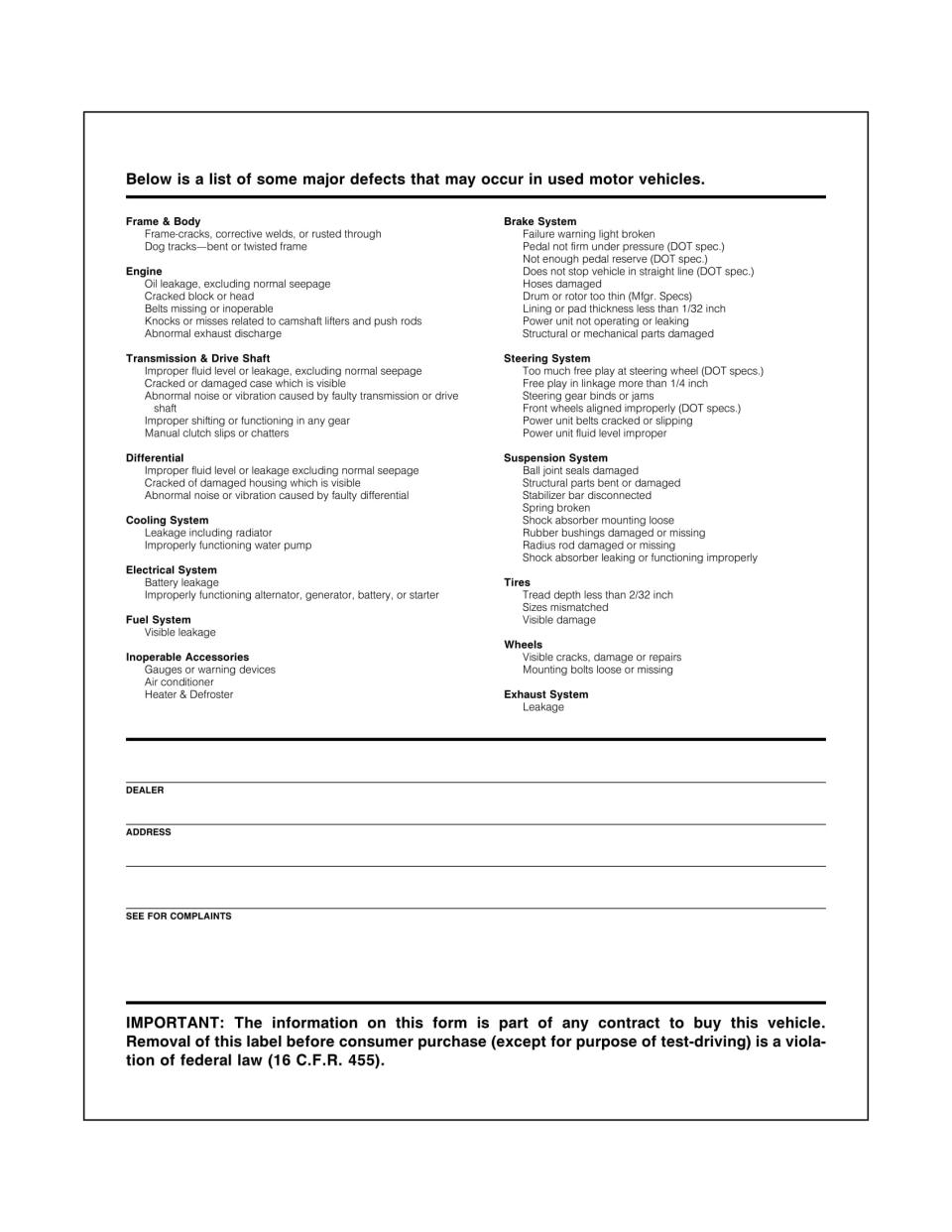The One Document You Can't Ignore When Shopping for a Used Car

People call my office daily about used car purchases gone bad. All manner of things turn out to be wrong with used cars, typically soon after they have been purchased by careless buyers. The troubling aspect of this is that 99.9 percent of the time, the buyer was given a blatant warning about the problems that would occur with the car, and the buyer simply ignored the warning. The warning came by way of The Buyers Guide.
Quite a few years ago, the Federal Trade Commission began requiring used car dealers across America to provide car shoppers with a document which did two things. First, it spelled out whether the vehicle came with a warranty or not. Those without warranties are sold "as-is." Most used vehicles sold in America are sold that way. There are one or two states that don't allow as-is sales (which the Buyers Guides in those states indicate) but everywhere else, the "as-is" cars are clearly described.

So, when someone calls my office to say they bought a bad used car, they often know the answer to my first question. "Did you buy it as is?" If they don't know, I ask them to check their Buyers Guide.
Next, I often hear that, even though it was sold as-is, the car has all sorts of problems which should not be wrong with a used car. Here is where it goes tragic. I point out to them the language on the Buyers Guide (right below the all caps "AS IS – NO WARRANTY" where it says "YOU WILL PAY ALL COSTS FOR ANY REPAIRS,") "The dealer assumes no responsibility for any repairs regardless of any oral statements about the vehicle."
Still, I am often told, this is not fair. Just listen to what went wrong with the car! And then I hear a grievous list of things which have gone wrong. The frame is bent, the brakes have failed. The engine block is cracked, the transmission is faulty. The complaints go on and on. Isn't it illegal to sell a car with such defects? The car is unsafe to drive!
This is where I ask the caller to turn the Buyers Guide over and look at the back of the document. There, it lists "major defects that may occur in used motor vehicles." Including, frame damage and brake failures. Engine block cracks and faulty transmissions. In fact, pretty much everything that can go wrong with a car is listed on the back of the Buyers Guide. And the back of the Guide is specifically pointed out to the buyer on the front where it says, "SEE THE BACK OF THIS FORM for a list of some major defects which may occur in used motor vehicles."

Still upset about the used car you just bought with all the defects even though you were handed a form before the purchase which specifically spelled out all the things which can–and did–go wrong with your car? You have no one to blame but yourself. Directly above the advice to read the back of the form is a suggestion that you should look into having the vehicle inspected before you buy it.
In my 25 years of speaking with disgruntled car buyers, I can tell you that this entire form has almost no effect on the shopping habits of car buyers. Most people see the form as just part of the flurry of paperwork which passes in front of them during the car buying vortex. Read it? Of course not. Almost none of the documents get read. And no one is bothering to flip that Buyers Guide over to see what evil lurks on the backside.
Which is unfortunate since the backside of that form often predicts the mechanical future of the car in chilling detail.
Steve Lehto is a writer and attorney from Michigan. He specializes in Lemon Law and frequently writes about cars and the law. His most recent books include Preston Tucker and His Battle to Build the Car of Tomorrow, and Dodge Daytona and Plymouth Superbird: Design, Development, Production and Competition. He also has a podcast where he talks about these things.
You Might Also Like

 Yahoo Autos
Yahoo Autos 